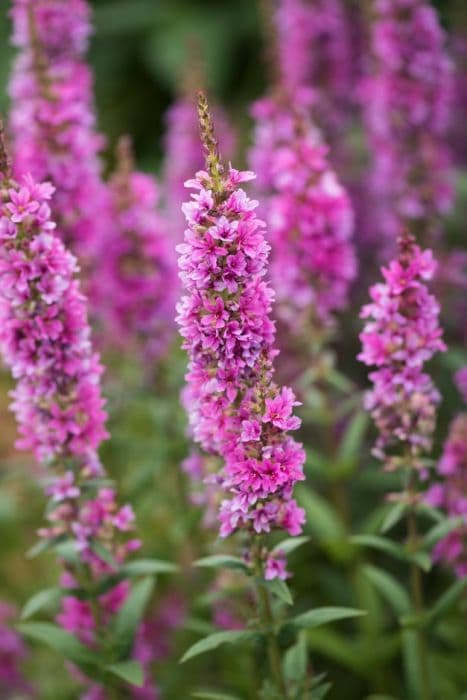Purple loosestrife Lythrum salicaria

ABOUT
The plant in question, commonly known as purple loosestrife, has a robust and upright appearance. Its stems are square-shaped and can vary in color from green to reddish-brown. The leaves are lance-shaped with smooth edges, attached directly to the stem without stalks, and are arranged in pairs opposite each other or in whorls. Through the summer months, purple loosestrife is celebrated for its striking flowers. These bloom in long, dense spikes at the tips of the stems and are composed of many small, individual blossoms. Each flower is about across, with five to seven petals that range in color from a deep magenta to a soft pink. The center of the flowers is often a contrasting yellow, due to the prominent stamens and pistil. The flowers give way to small, dry fruits that contain numerous, tiny seeds. These fruits are less than a inch long and release the seeds when mature, facilitating the spread of this plant. The overall appearance of purple loosestrife is lush and showy, which along with its tolerance for a range of conditions, has contributed to its popularity in ornamental gardens. However, its ability to spread aggressively also makes it a concern in natural wetland areas where it can outcompete native vegetation.
About this plant
 Names
NamesFamily
Lythraceae.
Synonyms
Purple Loosestrife, Spiked Loosestrife, Purple Lythrum, Rainbow Weed, Salicaire.
Common names
Lythrum intermedium, Lythrum salicaria var. tomentosum, Lythrum tomentosum, Salicaria spicata, Lythrum virgatum, Salicaria salicaria, Salicaria vulgaris
 Toxicity
ToxicityTo humans
Purple loosestrife is not known to be toxic to humans. There are no commonly reported toxic effects from ingesting any part of this plant. However, as with any non-culinary plant, it is generally advised not to consume it.
To pets
Purple loosestrife is also not known to be toxic to pets. There are no common reports of toxicity or poisoning in domestic animals from ingesting parts of this plant. Nonetheless, it's always best to prevent pets from eating non-food plants to avoid potential gastrointestinal upset or unexpected reactions.
 Characteristics
CharacteristicsLife cycle
Perennials
Foliage type
Deciduous
Color of leaves
Green
Flower color
Pink
Height
3-4 feet (0.9-1.2 meters)
Spread
1-3 feet (0.3-0.9 meters)
Plant type
Herb
Hardiness zones
3-9
Native area
Europe, Asia
Benefits
 General Benefits
General Benefits- Wildlife Habitat: Lythrum salicaria, commonly known as Purple Loosestrife, offers nectar for bees and butterflies, supporting pollinator populations.
- Erosion Control: The robust root systems help stabilize soil and prevent erosion along riverbanks and wetland areas.
- Aesthetic Appeal: Purple Loosestrife has vibrant purple flowers that add color and visual interest to landscapes and gardens.
- Water Filtration: It can play a role in wetland ecosystems by helping to filter and clean the water, though it must be carefully managed to avoid becoming invasive.
- Biomass Production: This plant has the potential to be used for biomass, especially in areas where it grows robustly and can be harvested without ecological harm.
- Habitat Diversity: By growing in wetland areas, Purple Loosestrife contributes to habitat diversity, providing homes for various aquatic and semi-aquatic species.
- Educational Tool: Purple Loosestrife can be used to educate people about plant ecology, wetland conservation, and the management of invasive species.
- Craft and Dye Making: Historically, the plant has been used for making dyes and for various crafts due to its color and availability.
 Medical Properties
Medical Properties- Anti-inflammatory: Lythrum salicaria, commonly known as purple loosestrife, has been used in traditional medicine for its anti-inflammatory properties.
- Astringent: It contains tannins that can act as astringents, which may help to reduce swelling and control bleeding.
- Antidiarrheal: The astringent effect of purple loosestrife has also been utilized to help with diarrhea and gastrointestinal disorders.
- Antimicrobial: Some studies suggest that extracts from purple loosestrife have antimicrobial properties against certain bacteria and fungi.
- Antioxidant: The plant is believed to contain compounds with antioxidant effects, which can help to fight oxidative stress.
 Air-purifying Qualities
Air-purifying QualitiesThis plant is not specifically known for air purifying qualities.
 Other Uses
Other Uses- Lythrum salicaria, commonly known as purple loosestrife, can be used for dye production; the plant contains tannins and can produce a reddish-purple dye for fabrics.
- In beekeeping, purple loosestrife provides a significant source of nectar, thus promoting honey production when flowers are abundant.
- The stems of the plant are fibrous and have historically been used for making small items such as mats or even paper in some artisanal crafts.
- Due to its dense growth, purple loosestrife can be cultivated to provide shelter for wildlife, especially in wetland areas.
- The substantial root system of purple loosestrife can help with erosion control by stabilizing soil in damp environments.
- Gardeners may use the plant for ornamental purposes in water features or moist garden areas due to its striking flower spikes.
- Its ability to absorb nutrients, especially nitrogen and phosphorus, allows purple loosestrife to be used in the phytoremediation of wastewater.
- When harvested and composted, the plant can add organic matter back into the soil, improving soil structure and fertility.
- Some cultures use the dried flowers and stalks of purple loosestrife in floral arrangements and decorative crafts for their lasting color and structural integrity.
- Purple loosestrife can be incorporated into educational programs about invasive species, their impact on ecosystems, and the importance of biodiversity.
Interesting Facts
 Feng Shui
Feng ShuiPurple loosestrife is not used in Feng Shui practice.
 Zodiac Sign Compitability
Zodiac Sign CompitabilityPurple loosestrife is not used in astrology practice.
 Plant Symbolism
Plant Symbolism- Healing: Lythrum salicaria, commonly known as Purple Loosestrife, is often associated with medicinal properties and the ability to heal ailments, harkening back to its use in traditional medicine.
- Persistence: Due to its robust nature and ability to thrive in various conditions, Purple Loosestrife symbolizes persistence and the ability to overcome challenges.
- Provision: In some cultures, it represents provision because it was used to feed livestock in the past.
- Beauty: With its striking purple flowers, the plant is a symbol of natural beauty and is often planted for its decorative appeal.
- Invasive Nature: In places where it's considered invasive, Purple Loosestrife may represent unchecked growth or the domination of one group over another.
 Water
WaterPurple loosestrife should be watered deeply and regularly during the first growing season to establish an extensive root system. Once established, it is quite adaptable but prefers moist conditions, thus it may need weekly watering especially in dry periods. Depending on the soil and climate, the amount of water required may be around 1 to 1.5 gallons per week for an established plant. During hot spells or drought, increase watering to twice a week. Avoid overhead watering to reduce the risk of leaf diseases.
 Light
LightPurple loosestrife thrives best in full sun, which means it needs at least six hours of direct sunlight each day. The best spot for purple loosestrife is an area that gets ample sunlight throughout the day, without too much shade. Partial shade is tolerated, but the plant may not bloom as profusely.
 Temperature
TemperaturePurple loosestrife is hardy and can tolerate a range of temperatures. It can survive in temperatures as low as -30°F and as high as 95°F. The ideal temperature for purple loosestrife is between 60°F and 75°F. It adapts well to various climates as long as extremes are avoided.
 Pruning
PruningPurple loosestrife may be pruned to maintain a desirable shape and to remove dead or damaged stems. Pruning in late winter or early spring is typically best, before new growth begins. Deadheading, or removing spent flowers, can prevent unwanted seed spread and may encourage additional blooming.
 Cleaning
CleaningAs needed
 Soil
SoilPurple loosestrife thrives in moist, fertile soil with a pH range of 5.0 to 7.5. The ideal soil mix should contain loam or clay-loam soil augmented with organic matter, such as compost or peat moss, to retain moisture while providing good drainage.
 Repotting
RepottingPurple loosestrife typically does not require frequent repotting. It should be repotted every two to three years or when it outgrows its current container.
 Humidity & Misting
Humidity & MistingPurple loosestrife prefers a high humidity environment. While it tolerates average humidity levels, it thrives in conditions closer to those of its natural wetland habitat.
 Suitable locations
Suitable locationsIndoor
Provide full sun, keep soil moist, and ensure high humidity for indoor purple loosestrife.
Outdoor
Plant in full sun, ensure moist soil; suitable for pond edges or damp sites.
Hardiness zone
3-9 USDA.
 Life cycle
Life cycleLythrum salicaria, commonly known as Purple Loosestrife, begins its life cycle as a seed, typically germinating in moist soil conditions in early spring. Upon sprouting, the seedling grows rapidly, forming a robust root system and a rosette of leaves at ground level. In its first year, it may remain in a vegetative state, but from the second year onwards, it develops tall, erect stems that can reach up to 2 meters in height. Throughout the summer, usually from June to September, it blooms with spikes of vibrant purple flowers, which are pollinated by insects, leading to the production of small capsules containing numerous seeds. After flowering, the plant begins to senesce, with stems dying back but leaving the rootstock intact to regenerate the following spring. Purple Loosestrife is a perennial plant; hence, this cycle of growth, flowering, seed production, and dieback occurs annually, enabling the plant to spread and colonize new areas, particularly in wetlands and along waterways.
 Propogation
PropogationPropogation time
Spring-Early Summer
Propogation: Purple loosestrife, scientifically known as Lythrum salicaria, is generally propagated by seed, which is the most popular method. The best time for sowing the seeds is in late winter or early spring, just as the last frosts are ending. To propagate, seeds should be sown thinly onto the surface of a moist, well-drained seed starting mix, and then lightly covered with a fine layer of soil. The tray or pot should be placed in a warm spot with plenty of indirect light, as seeds require sunlight to germinate. Germination can take 2-4 weeks at a temperature around 70°F (21°C), and once seedlings are large enough to handle, they can be transplanted into individual pots to grow on before being moved outdoors after the threat of frost has passed.
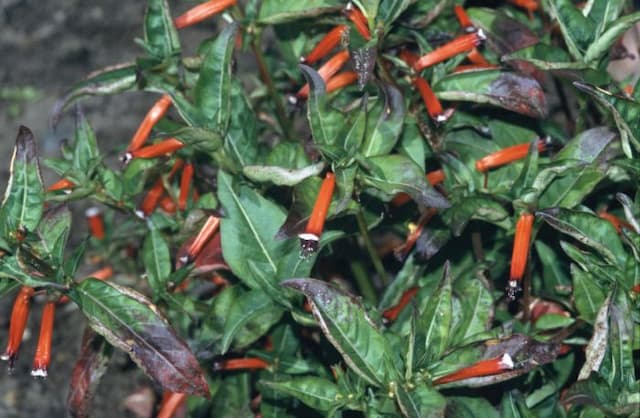
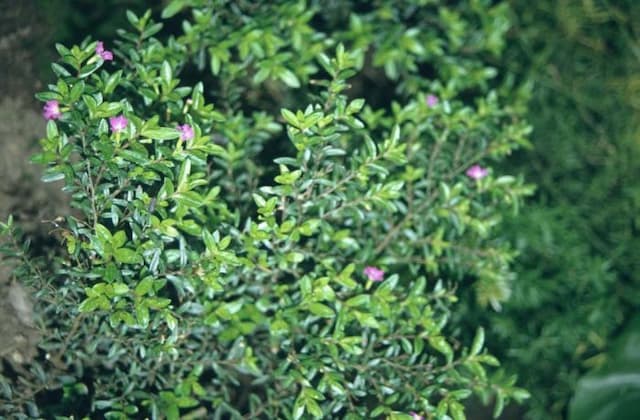

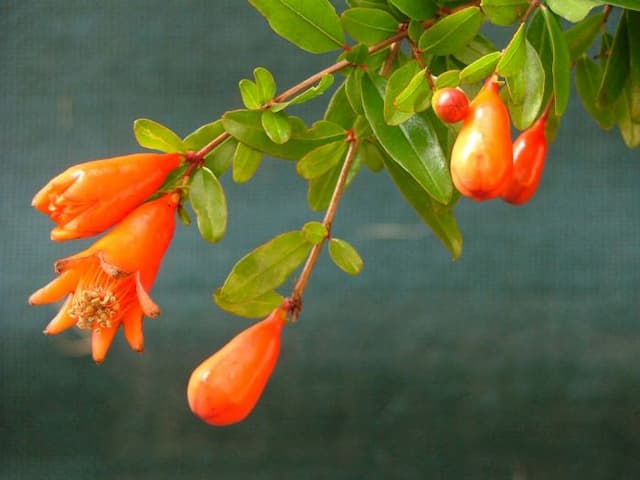
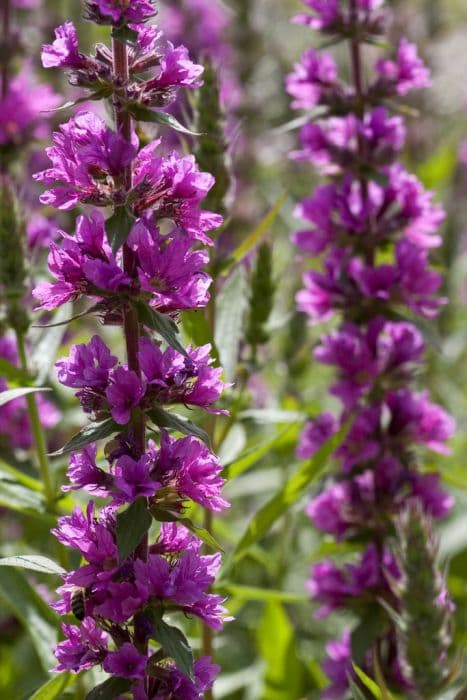
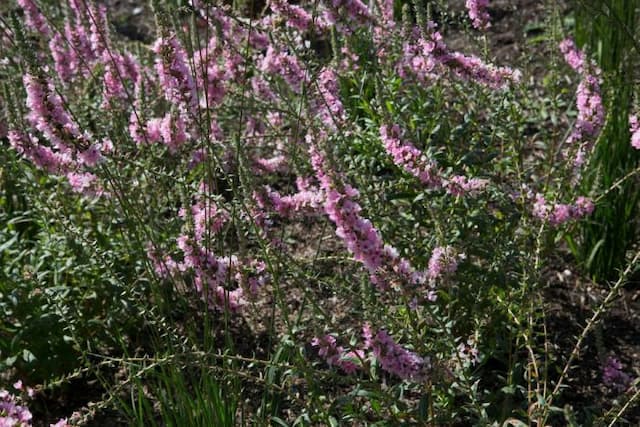
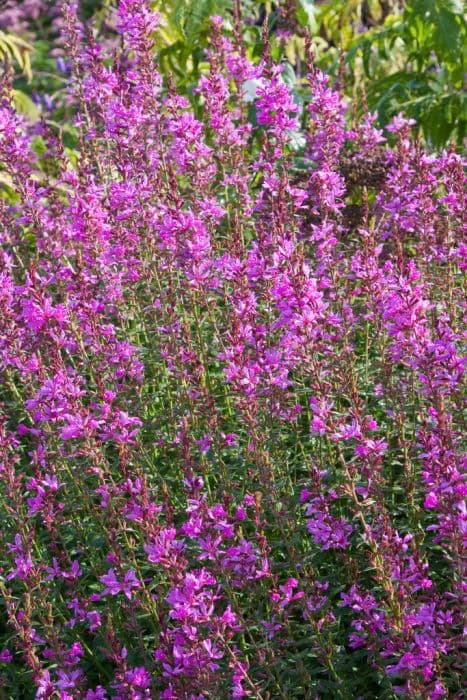
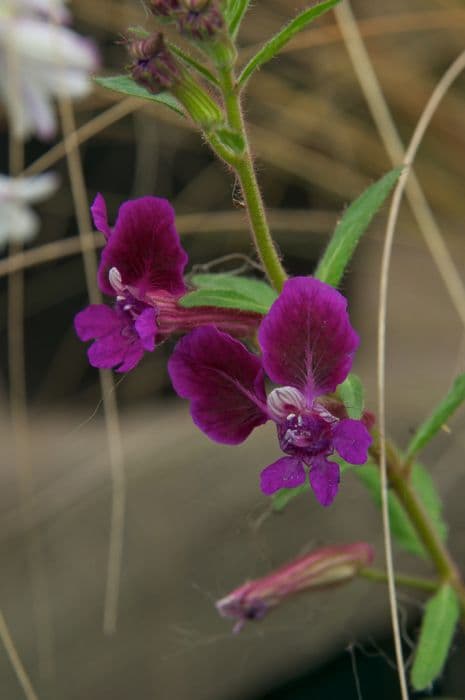
![Crape myrtle [Braise d'Été]](/_next/image?url=https%3A%2F%2Fplants-admin.emdemapps.com%2Fimages%2Fplants%2F%2Fimages%2F604b63ea2652e.png&w=640&q=75)
